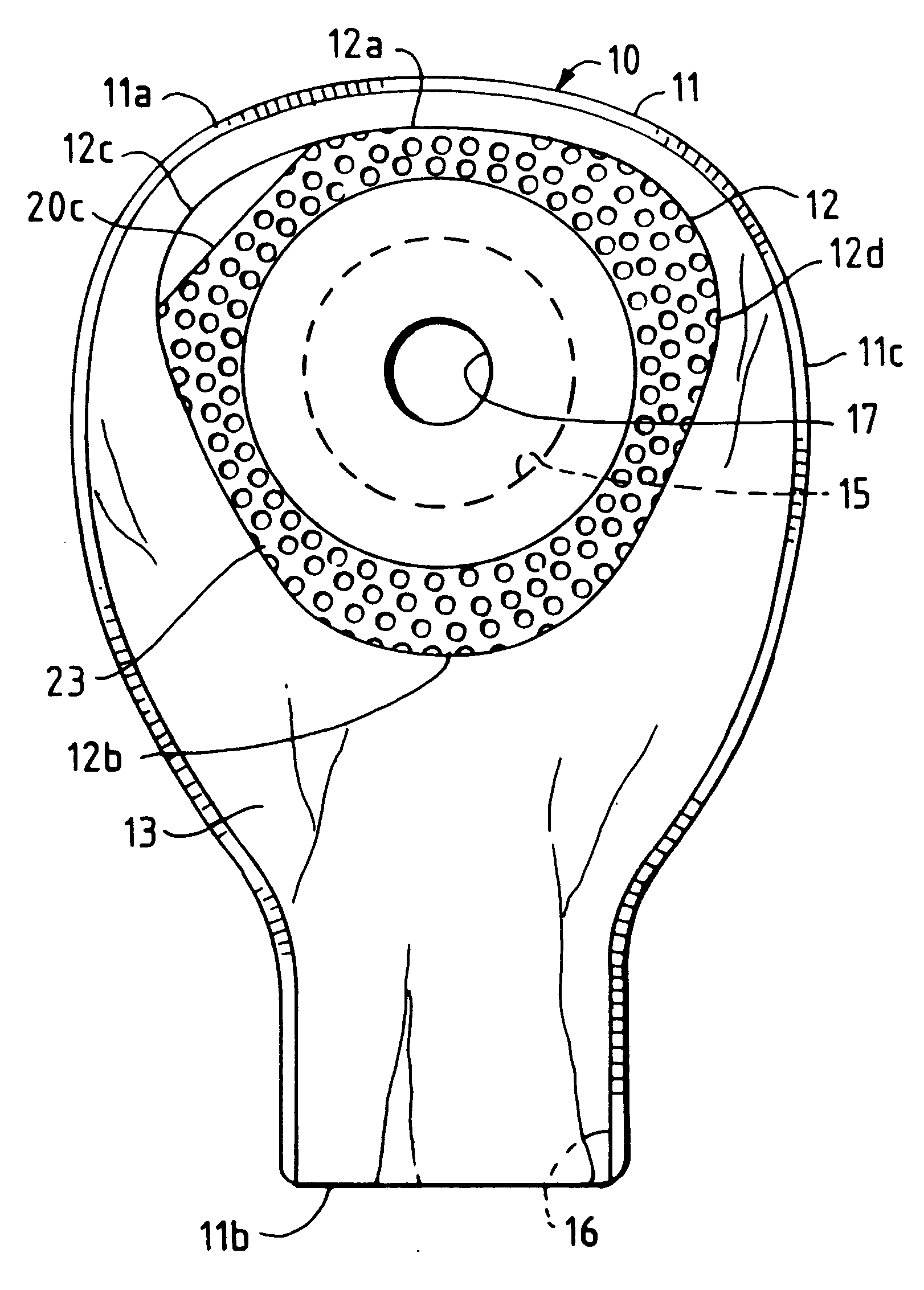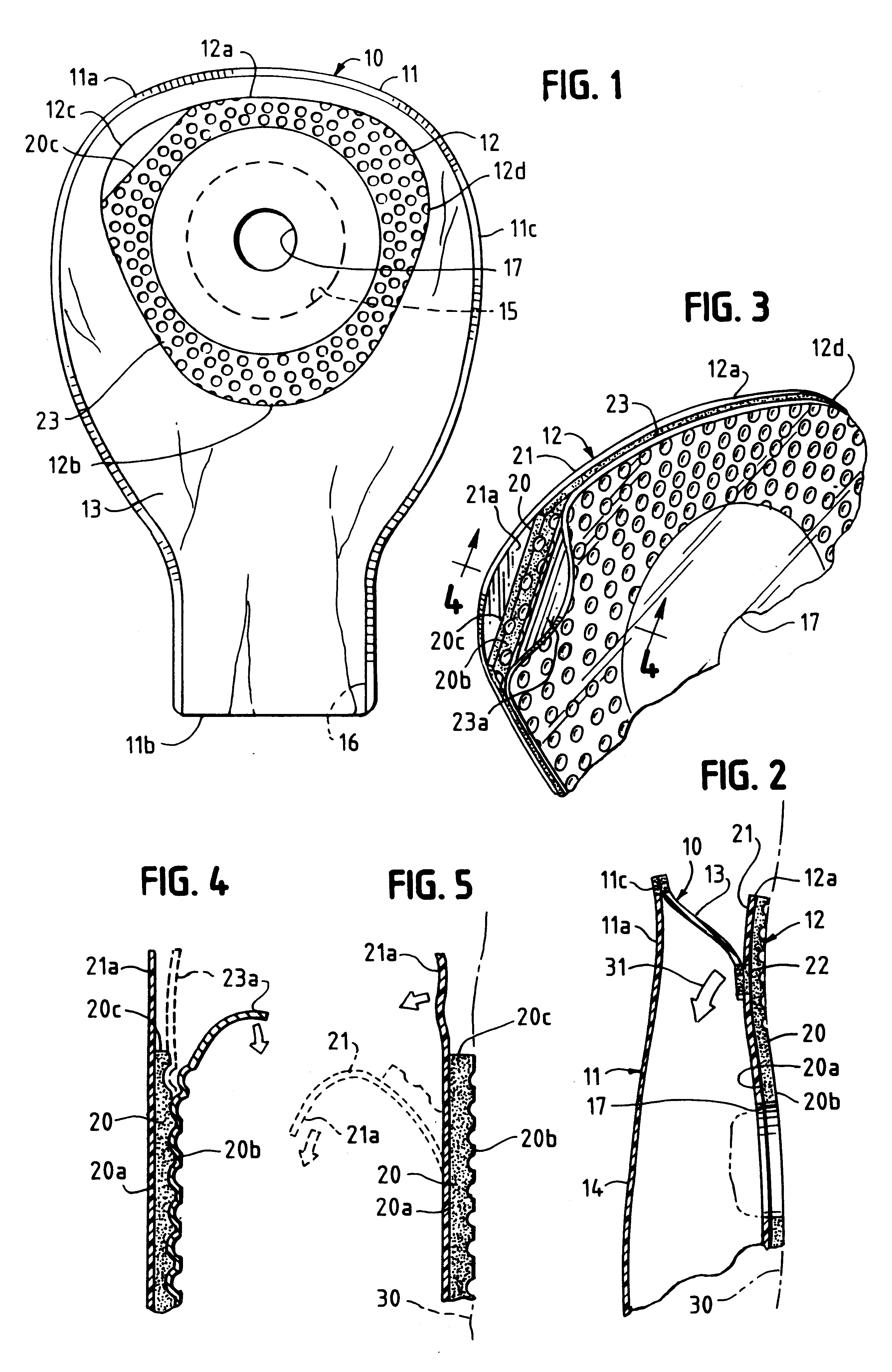Ostomy appliance with inverted triangular faceplate and non-protruding pull tabs
- Summary
- Abstract
- Description
- Claims
- Application Information
AI Technical Summary
Benefits of technology
Problems solved by technology
Method used
Image
Examples
Embodiment Construction
Referring to the drawings, the numeral 10 designates an ostomy appliance consisting essentially of a pouch 11 and a faceplate 12. The drawings depict what may be referred to as a one-piece appliance, such term being commonly used to mean a unitary appliance having a faceplate intended to be adhesively secured directly to the peristomal skin surfaces of a wearer. It is to be noted, however, that at least some of the advantages of this invention might be obtained if used in a two-piece appliance in which the pouch and its adhesive faceplate are intended to be adhesively attached to (and detached from) the surface of a mounting ring which in turn is adhesively attached to such peristomal skin surfaces. Therefore, the term "appliance," as here used is meant to include not only a one-piece ostomy appliance but also the pouch / faceplate component of a two-piece adhesively-coupled appliance.
Pouch 11 has upper and lower ends 11a and 11b, respectively and is typically composed of two panels o...
PUM
 Login to View More
Login to View More Abstract
Description
Claims
Application Information
 Login to View More
Login to View More - R&D
- Intellectual Property
- Life Sciences
- Materials
- Tech Scout
- Unparalleled Data Quality
- Higher Quality Content
- 60% Fewer Hallucinations
Browse by: Latest US Patents, China's latest patents, Technical Efficacy Thesaurus, Application Domain, Technology Topic, Popular Technical Reports.
© 2025 PatSnap. All rights reserved.Legal|Privacy policy|Modern Slavery Act Transparency Statement|Sitemap|About US| Contact US: help@patsnap.com


